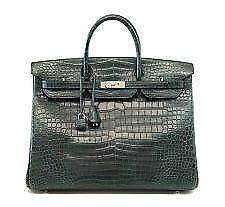 Many luxury brands rely on handbags and accessories for the majority of their sales. These items are one-size-fits-all, easy to produce, and profitable and offer consumers a way to own a luxury item without spending money on an entire wardrobe.
Many luxury brands rely on handbags and accessories for the majority of their sales. These items are one-size-fits-all, easy to produce, and profitable and offer consumers a way to own a luxury item without spending money on an entire wardrobe.
Luxury handbag makers have drawn in new customers in recent years by opening new stores and reducing their prices. Making products accessible to more consumers is normally a smart business move, but it often backfires in the world of designer handbags. If luxury handbags become more commonplace, they can lose their exclusive status that made customers want them in the first place.
When Michael Kors went public three years ago, it had 231 stores around the world. Today, the brand has 509 stand-alone stores and almost 200 licensed locations. The company began selling handbags in suburban outlet stores at affordable prices. That has made Michael Kors handbags common and has caused many fashion bloggers and financial analysts to predict the company’s decline.
Coach has faced the same problem. It began opening many new stores about 10 years ago and focused on outlet stores to attract suburban customers. By 2013, outlet sales accounted for 70 percent of Coach’s overall sales. The brand was no longer considered exclusive and had to compete with other handbag makers that were expanding, including Kate Spade and Michael Kors. In the past two years, Coach has tried to reverse this trend by closing 70 stores, mostly outlets, and by no longer offering deep discounts. It has also opened a flagship store in Paris and hopes to grow into a premium lifestyle brand.
Louis Vuitton began expanding into Asia in the late 1990s. The push was so successful that it is estimated that by 2011, 85 percent of Japanese women owned at least one Louis Vuitton item. The brand is no longer seen as exclusive, which can be a problem as the company tries to expand into China. Nevertheless, Louis Vuitton remains one of the most successful luxury brands in the world. The company recently decided to start an arts foundation and build a contemporary art museum in Paris to attract high-end arts patrons.
Hermes has resisted the trend toward lower prices and mass production of its handbags. Hermes continues to hand-make its handbags. Its exclusive and expensive Birkin bags are produced only in small quantities and for preferred customers who order them months in advance. This has allowed Birkin handbags to be sold for $50,000 to $100,000 and to maintain and sometimes even increase their value for years.

Leave a Reply